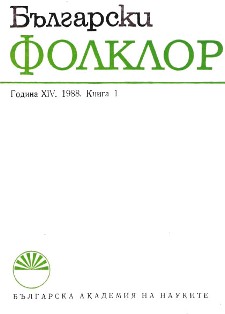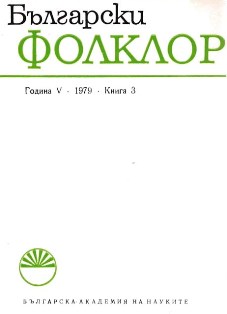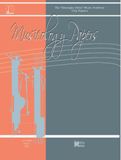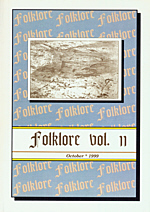




The article makes an attempt from a sociological point of view to decipher the data about the continuity of a village tradition, encoded in historic memory. Use is made of folklore, linguistic and toponomic material in order to prove that the Moslem population predominant in the village in 1878 is direct descendent of the Bulgarian Christian population in the studied village. Material to prove that thesis is sought in the preserved name of the village (Dobrodan), in the still extant legends about the mythical founders of the village (the shepherd brothers Dobri and Dan), about the Turkish Conquest and specifically about the Islamization of the village, about sacred and enchanted spots in the village lands and about the cases of Islamization right up to the Liberation. The fact that the Islamized population still remembers the legends about the origins, the Turkish Conquest and the Islamization process, as well as the unchanged name of the village, point to a particular significance of the name of the village – Dobrodan. Content analysis of local legends, toponymy data and certain linguistic “fossils” as well as research into the refrains of Christmas songs serve as the basis for a hypothesis for the existence of a possible Slavonic god Dobrodan (Dobri-Dan, Dobri-bog Dan, etc.), whose shrine was in the lands of this village that is why the village has preserved its name unchanged even after Christianization and Islamization and which in turn confirms the thesis of the continuity of the village tradition.
More...








Keywords: ancient-classical, barbarian-modern, Europeanity, discretionary individualism, uniqueness, conceptual complexity, progressive dissipation.
In total opposition with the image of a linear and progressive evolution of European music, which has long acquired referential status in the context of (primary, secondary and higher) musical education, the central idea of our study reveals at least two of its beginnings – the classical Greek antiquity and the early Middle Ages (barbarian and Christian). The first argument in favour of the latter is the process of dialectical interaction of the signs of the two cultures, as well as their mutual strengthening – (a) the numerical-cosmical, mystical “genome” of Pythagoras and (b) the discursive-conceptual, rational-philosophical “genome” of Plato. These two “genomes”, as distinct, “uniform” and “stationary” signs of the ancient culture (Guizot), are potentiated by another pair of “genomes”, this time belonging to the Middle Ages, namely (a) a sum of characteristics of the nomadic mentality and imaginary (barbarian – Crocker, Guizot) – dynamism, individualism, freedom and independence, and (b) the centripetal and all-encompassing energy of the Christian religion, with its central idea of tolerance. The second argument aims at redefining the image of progress, because each stylistic period after the Middle Ages – from the Renaissance up to Modernism, is nothing but an increasingly weaker and “cooled” form (Guénon and Martynov) of the primal (barbarian) evolutionary energy. This progress was in reality a progress of dissipation, stemming from the clash between the two ancient “genomes” – the Pythagorean ontologism and the Platonic hermeneutics, both re-signified in terms of a continental-Christian, imperial culture, until the Renaissance, when preference was shifted to the weaker, Platonic option, with predictable consequences for the entire subsequent evolution not only of musical culture, but of European thinking in general. Progress in musical thinking and practices stemmed from the preference for an ever stronger discretionary individualism and conceptual complexity, to compensate for the (also progressive) dissipation of the spiritual “temperature”. Musical postmodernism, viewed as a time of chaos, dissemination, fragmentation, deviation, loss and denial of all the strong cultural truths, is but a logical consequence of this spiral evolution, though not in the sense of the Hegelian spiral, but in that of the human DNA, with the two strands – ancient and barbarian, each with two constituents, advancing towards progressive dispersion.
More...
Keywords: genre, form, subjective perception, analytical objectivity, cultural environment
As a consequence of the technical development and growing importance of musical instruments, Baroque music displays, for the first time in musical thinking, a keen interest in the concept of genre, in its suitability to the various functions of music and in the standardisation of certain architectural typologies. After this age of frantic instrumental composition and continuous search for patterns for ordering the different discursive modes, the constant emergence of new musical genres proved to be the consequence of the development, throughout the centuries, of new types of musical architectures, tailored to the new forms of language, aesthetics, cultural environment etc. Assuming that the musical genre is a kind of “contract” between author and public (audience, musicians, analysts etc.), or a convention (sometimes even a mere pretext), the paper discusses the relationship between genre and form, genre and era (cultural environment), genre and musical language.
More...
Keywords: music life, education, artistic activity, cultural societies, concert-halls, cultural institutions, competitions, composers
This paper presents the history of musical life in Thessaloniki during the 20th century, after the liberation of the city from Ottoman rule in 1912. In the early 20th century, musical life in Thessaloniki was rather scarce, despite the artistic societies and associations that existed in the city (most with philharmonic orchestra, chorus and orchestra of mandolins), or the opera performances presented by various touring Greek or foreign melodramatic companies. With the liberation of the city, the musical activity intensified following the establishment of numerous orchestras, choirs and musical ensembles, cultural societies, concert halls and cultural institutions. Many musical education institutions were also established which had a substantial contribution to the development of musical education in Greece and of musical life in Thessaloniki.
More...
Keywords: Keywords: ancient Greek music, Babylonian system of modes, metabole, tritonic type
One of the most ancient elements of the theoretical thought in South-Eastern Europe is related to the kithara, which, according to Nichomakos, until the time of Orpheus had four strings, tuned D – G – A – D. The tuning system of the ancient guitar was of a tritonic type, this being the second stage in the history of melody. This tonal frame represented an important moment in the evolution of the future principal system of ancient Greece. Apart from this system, musical practice imposed the introduction of a new system in the theory, based on the complexity of melodies and of their modulations. This new system was the Systema elatton. The procedure of passing from one system to another is based on a metabole, i.e. the changing of H with B. The paper provides a detailed presentation of these aspects for the purpose of a comparative study between the South-Eastern European and the Mesopotamian musical cultures, and is illustrated with examples from different geographical areas and historical periods. It is concluded that there are a great deal of relations between Europe and Asia, in both directions. Although certain Mesopotamian elements have been identified in the Greek theory, we cannot neglect the great, complex and logical construction of this latter musical thought.
More...
Keywords: cluster, musical notation, performance, typology, applicability
The term cluster is an English word used in music to describe a complex of sounds played simultaneously. Micro- and macro-systemic approaches within varied fields of activity have caused the exploration of clustering techniques in relationship to variables specific to each area of research. This study undertakes to point out a few particular approaches of clusters in contemporary Romanian piano works, highlighting distinctive notational solutions which have generated various performances of the same sound effect: the cluster. The piano works of composer Violeta Dinescu offer this study analytical highlights, focusing, by means of concrete musical examples, on the trichotomic relationship which measures the connections between sign-object-sonorous output. The explanation of the phenomenon by analogy to Ch. S. Peirce’s theory of the ternary structure of the sign is meant to establish an analytical borderline on both micro- and macro-structural level. The compositional approach of the cluster on the two levels is also highlighted in the pieces Cluster-Melodia and Improvvisazione of the cycle Jocuri pianistice/Piano games by Eduárd Terényi, where the second piece draws the graphic contour of the previous one within hourly durations and a determined sound density. The research study proves that sound innovations gained by the piano in Modernism, Postmodernism, and contemporary music are correspondingly reflected in the field of graphical notation. The cluster, by means of the composers’ utterly personal graphical expression, which generates both varied interpretations and an individualized perception of the effect, opens up new perspectives in terms of the phenomenon’s analysis and hierarchy.
More...
Keywords: transcendence, musical discourse, P. Sloterdijk, H. Mühlmann, V. Jankélévitch
Starting from the question “what are the specific musical means of representing the idea of transcendence in the musical discourse?”, the study reflects upon the philosophical meaning and features of this idea under the inspiration of two German contemporary thinkers – Peter Sloterdijk and Heiner Mühlmann. The author analyzes and adapts to the musical environment seven different possibilities of capturing the idea of transcendence in music and of understanding it in a specific and veiled musical way. These seven possibilities would be: slowness, violence, silence, caress, height, darkness, and explosion.
More...